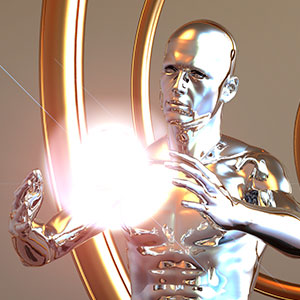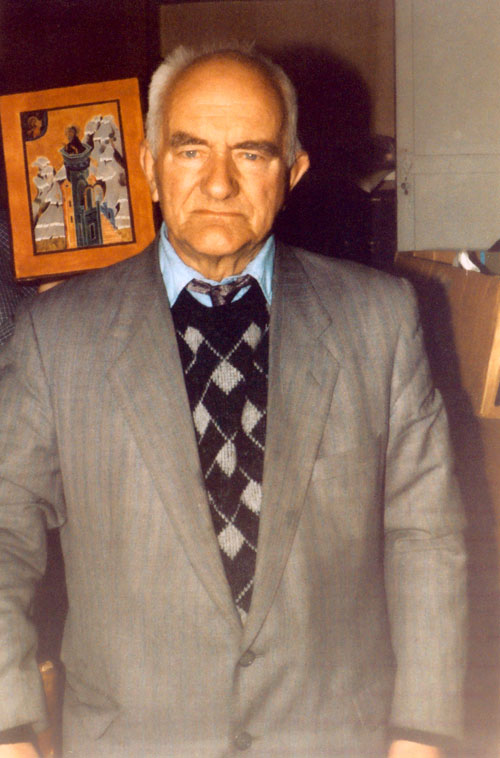
WHAT IS INITIATION?
THE INITIATIC PHOSPHENE
PREAMBLE
THE “INITIATIC” PHOSPHENE
FOCUSING ON A DETAIL OF THE PHOSPHENE
(or VISUAL CHAOS, also called AURA, exercise)
1. Seek out and then concentrate on a specific detail within the visual chaos (or aura).
OTHER SWAYS
WORKSHEET #7: Vital Force Sways, the Great Life Force’s Transmission with the focusing point’s oscillation.
Phosphenism, its effects are no longer to be proven, but to discover
OTHER EXERCISE
WORKSHEET #8: Ocular Convergence
Concentration between the eyes, also known as the eye of Shiva or Phosphene, is traditionally associated with the practice of mental emptiness. It’s not akin to philosophical nihilism; rather, it entails a heightened sense of emptiness, akin to what’s found in Tibetan yoga.
Find all the exercises associated with ocular convergence, by following the complete training

Photography of the stained glass windows of the “Notre-Dame d‘Amiens” Cathedral (France), where we quite clearly see the Saints in the position of eye convergence, showing that during the Catholic Crusades returned to the true sources of Christianism: the initiatic exercises.
Extract from the book “Power of Christianism”.
Following a training is the guarantee of an effective practice
OTHER EXERCISE
WORKSHEET #10: Static Tensions


Dr. LEFEBURE demonstrating the exercise of static tensions: the jaw is slightly tightened, and the lungs are filled.
Discover ancestral techniques that allow to densify and project your energetic body, by following the complete training
Initiation is primarily the revelation of an alternate realm that perpetually exists, here and now, yet remains inaccessible to most due to their ignorance of its governing laws—laws known and applied since time immemorial.
Any lingering uncertainties stem from individuals who either lack direct experience with these phenomena or have not undergone the complete initiatory process. Consequently, these individuals engage in discussions about these phenomena without comprehensive understanding, perpetuating often absurd misconceptions. Take, for instance, contemporary discussions about the supposed risks of becoming lost in the “astral world” or severing the “etheric link” or “silver cord” connecting the astral body to the physical body. Such remarks are essentially meaningless and reflect the experiential misunderstanding of those who make them.
Recognizing these phenomena as subjective sensations also reveals the existence of a subjective universe intricately linked to, yet distinct from, the material world. Phosphenes serve as the key unlocking initiatory exercises like static tensions, granting unlimited access to this subjective world and the authentic adventures it holds.
But is this all? No, we must acknowledge that these sensations indicate the existence of a sensory system tied to subtle energy. Therefore, we can infer the presence of a form of perception underdeveloped in humans not due to lack of evolution, but rather non-utilization. This is why understanding its functioning eludes them—nothing more!
Note: Initially, during static tension training, it may be easier to contract the body’s muscles than to induce slight tension. However, this approach quickly leads to exhaustion and should be avoided. Fortunately, after a few days of training, individuals often find that slight tension suffices, inducing muscle trembling.
Static tensions do not demand excessive physical exertion; it’s merely a matter of dosage. Like all initiatory techniques, they are present in various traditions, where the principle remains consistent: accumulating energy in the brain through physical rhythms, albeit with slight variations in practice.
For example, these exercises can be performed lying down, sitting, or standing. Different traditions may further break down movements according to selected body parts and muscle groups, sometimes more extensively than what we recommend in the “Practical Course of Astral Projection.”
In this course, the exercises are a continuation of those imparted by Zoroastrian Initiation, where emphasis is placed on comprehensive bodily tension. Doctor Lefebure’s approach, passed down by his initial Master, appears to strike a harmonious balance compared to other traditions.
It’s important to note that the chosen tradition matters little. Whether opting for a practice with segmented movements or one focusing on holistic bodily tensions, the essential aspect is committing to one approach consistently.
Doctor Lefebure recommends segmenting the body into seven parts followed by a comprehensive tension, aligning with the Zoroastrian Initiation lineage.
Once rhythms are internalized, occurring spontaneously during sleep, there’s no need for segmentation, and practitioners can transition to comprehensive tensions.
As everything revolves around rhythm accumulation, efforts should adhere to the time durations outlined in the practical course on astral projection. These suggested rhythms stem from Doctor Lefebure’s examination of double Phosphenes’ oscillation patterns, detailed in his book “Exploration of the Brain by the Oscillations of Double Phosphenes.”
